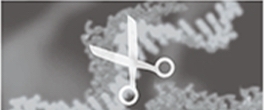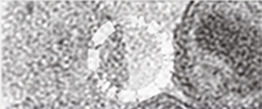No matter the application, whether you’re checking individual miRNA or lncRNA expression levels or profiling a range of constructs, knocking-down or overexpressing miRNAs, SBI’s got your miRNA research and lncRNA research tools covered. Select from a wide-range of pre-made expression or knockdown constructs, or use one of our expertly curated profiling arrays.
miRNA & lncRNA Research Tools
From profiling to overexpression for biomarker discovery, basic and translational research, and more, SBI’s got the long and short of non-coding RNA covered
Lenti-miR Libraries
miRNA qPCR Profiling
RESOURCES
MICRORNA PROFILING FAQS
How should I prepare or purify my RNA prior to QuantiMir cDNA synthesis?
We have tested both small RNA fractionation using Ambion's miRVana kit and compared it to using Trizol-extracted total RNA preparations with comparable results. For most applications, simple Trizol extraction will suffice. We do not recommend using spin column purification of small RNAs for this procedure.
What is the sensitivity of the QuantiMir™ system?
For detecting most microRNAs, we recommend that you use 100 picograms of starting total RNA for cDNA synthesis per microRNA you wish to quantitate.
Example: Start with 10 ng total RNA=Measure 100 microRNAs
How can I determine whether I am measuring the mature versus the precursor form of the microRNA?
SBI and others have found that the mature form of the microRNA exists in about 90% of the steady-state RNA preparations versus 8% precursor form. QuantiMir cDNA can be used to measure both forms and discrimination with relative abundance quantitation is simple to perform.
Is it true that I can quantitate BOTH messenger RNA and small RNAs from QuantiMir cDNA?
Yes. The system converts BOTH small RNAs as well as messenger RNAs that have polyA tails into cDNA compatible with qPCR.
How are the microRNA profilers supplied? What do I do with the primer plates that I have received?
The microRNA profilers are supplied as desiccated primers on 384-well plates. When you receive the stock plates, resuspend the primers in 22 ul of water, centrifuge the plate briefly to collect the water at the bottom of the plate, and allow the primers to be resuspended for about 20 minutes (keep the plate covered to prevent evaporation). Then aliquot 1 ul/ well into the plates that you normally use for your qPCR machine. Use a multi-channel pipette to aliquot the primers. If you start with one 384-well plate, you will end up with twenty 384-well plates, each of which can be used for one sample (assay), for a total of 20 assays. It is important to aliquot the primers once resuspended so that evaporation in the stock plate doesn't occur, which could potentially change the concentration of the primers in the stock plate.
MICRORNA PRECURSOR CLONE COLLECTION (LENTI-MIRS) FAQS
Are Human mature microRNA sequences homologous to my species model system (Mouse, Rat, etc.)?
Mature microRNA sequences have a very high degree of sequence conservation across all vertebrates. To verify that SBI's Lenti-miR clones will produce the mature microRNA in your model system, view our application note. How to use the Sanger miRBase to align microRNA sequences(PDF) »
How are mature microRNA sequences expressed from SBI's Lenti-miR clones?
SBI's microRNA precursor clones express precursors that have about 200 bp of native, flanking sequence to the hairpin RNA. This ensures the proper expression and processing of the transcript and the eventual robust expression of the mature microRNAs.
How can I make a stable cell line overexpressing a microRNA?
SBI's microRNA precursor clones have a built-in GFP fluorescent marker that is co-expressed along with the microRNA. Transduce (infect) your target cells with packaged lentivirus for the microRNA construct of choice. After 48 to 72 hours, sort for GFP-positive cells using flow cytometry. These cells will serve as your founding colony clones.
How do I validate that the microRNA clone is overexpressed in my target cells?
SBI recommends using our QuantiMir kit, which is a SYBR green-based qPCR kit that specifically measures microRNAs. Often, TaqMan assays do not work to validate microRNA expression because of sequence variability that occurs at the 3' end of the processed microRNA, which can affect the ability of the TaqMan stem-loop primer to function. Since the SYBR green based qPCR is not as dependent upon the sequence of the microRNA, it enables better detection of expressed microRNAs. The specificity for the microRNAs in the QuantiMir kit comes with the primer design.
How is the pooled Lenti-miR virus library quality-controlled?
The pooled Lenti-miR virus library is transduced into HT1080 cells at an MOI of about 5. After 48 hours, the cells are lysed and genomic DNA is recovered. This genomic DNA is then interrogated for 95 different microRNA sequences along with vector-specific primers to determine that the proper representaion of greater than 90% is achieved.
MIRZIP ANTI-MICRORNA CONSTRUCTS FAQS
How do I verify that the miRZip I have chosen is knocking down the endogenous microRNA?
miRZip constructs produce a small hairpin-like RNA that is processed to an siRNA that is antisense to an endogenous microRNA. This miRZip sequence binds to the endogenous microRNA and prevents it from functioning. miRZip sequences however, do not generally cause a degradation of the endogenous microRNA, so measuring expression of the endogenous microRNA by qPCR generally does not show a change in the expression levels. We recommend verifying expression of the miRZip construct by using SBI's QuantiMir kit, with primers specific for the miRZip (these can be ordered through SBI as well). If a target protein's UTR is known for the microRNA, you can measure a change in its expression using Western blotting. Alternatively, you can have a functional assay for your cells to verify that the microRNA is no longer functioning.
GLOBAL MICRORNA AMPLIFICATION AND CLONING FAQS
Can I use total RNA or should I fractionate for small RNA prior to using the cloning kit?
SBI's has observed better success in cloning of microRNA sequences when starting with small RNA (200 nt and below) size-fractionated starting RNA.





